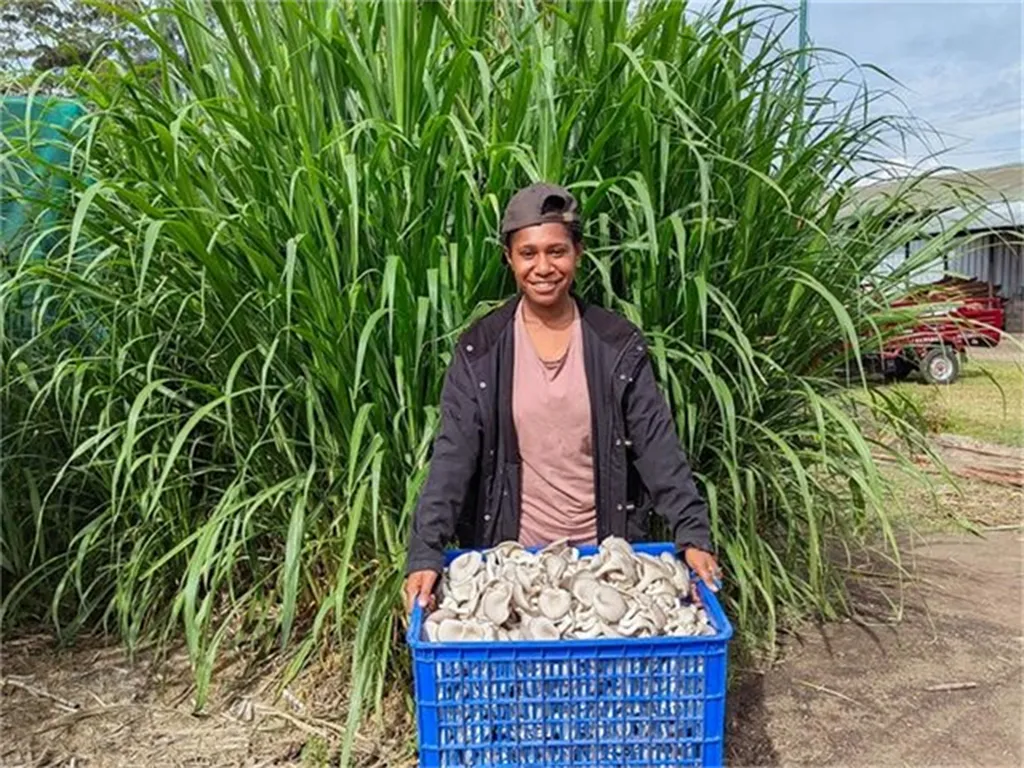On a sunny morning in July 2025, Lin Hui, a Chinese expert in Juncao technology, stood before a group of trainees at the China-Rwanda Agriculture Technology Demonstration Center in Rwanda’s Huye District. With a bundle of the lush green forage in hand, he explained how this simple yet transformative plant could boost livestock yields, improve soil health, and create economic opportunities—especially for women in rural communities.
Halfway across the continent, in Tanzania, Tahiya Bauso Massawe’s experience with Juncao has already proven Lin’s point. When Chinese agricultural experts first introduced the fast-growing grass to her village, Massawe was doubtful. “It looks like sugarcane,” she recalled thinking. “Would the cattle actually eat it?” But after testing it as fodder, she saw her cows’ milk production nearly double. The extra income allowed her to expand her farm, purchase equipment, and hire 16 workers—eight of them women.
For Massawe, Juncao became more than just animal feed. It became a tool for empowerment. She encouraged other women in her community to cultivate the crop, helping many earn their first independent income. Some used the money to send their children to school; others reinvested in their farms. “This technology has changed our lives,” she said. “It has given women like me a chance to lead.”
Massawe’s story is not unique. Since its development in the 1980s by Chinese scientist Lin Zhanxi, Juncao—literally “mushroom grass”—has spread to 106 countries, offering a low-cost, sustainable solution for livestock farming and soil conservation. But its impact extends beyond agriculture. In regions where women often face barriers to economic participation, Juncao has created pathways to financial independence.
China’s broader efforts in women’s development align with this grassroots progress. President Xi Jinping has repeatedly emphasized the role of women in global development, stating at the 2015 UN meeting on gender equality that “development cannot be achieved without women, and the benefits it brings must be shared by all.” This principle is reflected in initiatives like the Bamboo as a Substitute for Plastic program, a collaboration between China and the International Bamboo and Rattan Organization. By training women in bamboo cultivation and processing, the project has provided stable incomes in African nations while promoting eco-friendly alternatives to plastic.
Similarly, China’s Luban Workshop, a vocational training program, has equipped nearly 6,000 female students with technical skills in fields like agriculture, renewable energy, and digital technology. Many graduates have gone on to start their own businesses or secure employment in male-dominated industries.
Yet challenges remain. Gertrude Mongella, secretary-general of the landmark 1995 Fourth World Conference on Women in Beijing, notes that in many developing countries, women still lag behind due to limited access to funding, education, and skills training. In a recent interview, she called for deeper international cooperation, urging China to expand its knowledge-sharing efforts. “When women thrive, communities thrive,” Mongella said. “The experiences China has shared—whether through Juncao, vocational training, or green technology—show what is possible when women are given the right tools.”
The ripple effects of these programs are evident. In Rwanda, trainees at the China-Rwanda Agriculture Technology Demonstration Center are learning not just farming techniques but also business management, ensuring they can turn their newfound knowledge into sustainable livelihoods. For many women, this means breaking free from traditional gender roles and taking on leadership positions in their communities.
What makes Juncao and similar initiatives particularly effective is their adaptability. The technology requires minimal startup costs, making it accessible to smallholder farmers, a majority of whom are women in sub-Saharan Africa. By improving feed quality and reducing reliance on expensive imports, it directly addresses two major constraints: food security and economic vulnerability.
As these programs expand, they also foster a shift in perception. Women like Massawe are no longer seen merely as laborers but as innovators and entrepreneurs. Their success stories inspire others, creating a cycle of empowerment that transcends individual farms and reaches entire regions.
The broader implication is clear: sustainable development is inseparable from gender equality. By integrating women into agricultural and technological advancements, China’s initiatives demonstrate how targeted support can unlock potential on a global scale. The question now is how to scale these models further, ensuring that more women—from Rwanda to Tanzania and beyond—can turn opportunity into lasting change.

